
India has moved up 35 places to become the 88th best country in the world to live in, leaving behind nations like Russia and China, according to a survey.
The rise has made India the second best place after Bhutan to live in the sub-continent, according to the 2010 Quality of Life Index, published by travel magazine International Living.
Sweden has been dubbed as the costliest country in the world to live in by the index.
In 2009, India was the fourth best country in South Asia after Bhutan, Maldives and Sri Lanka.
The index, published for the 30th year, ranks 194 nations in nine categories: cost of living, culture and leisure, economy, environment, freedom, health, infrastructure, safety and risk, and climate.
India has not only improved its overall position in the tally, but has also gained around 25 points in the cost of living category. This year the country got 65 points compared to 40 last year.
"The figure relates to how much it will cost one to live in style comparable to, or better than, the standard of living you're likely enjoying in the United States," the magazine says.
Iraq tops the cost of living category, securing 100 per cent. This makes it the worst country to live in. The second-worst place to settle down in is Afghanistan, which got 88 points. For the record, Sweden scored a zero in the category. Click on NEXT to find out the top 10 countries to live in...
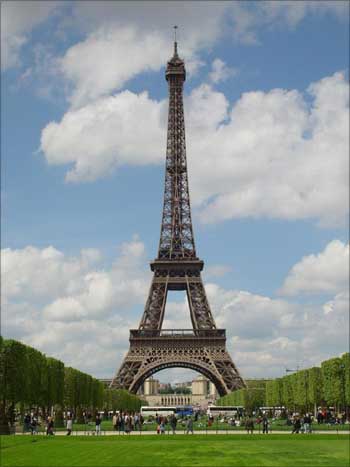
Rank 1: France
Overall, France topped the poll for the fifth consecutive year. It has been ranked as the best place to live in.
The country is in the midst of transition from a well-to-do modern economy that has featured extensive government ownership and intervention to one that relies more on market mechanisms.
The government has partially or fully privatized many large companies, banks, and insurers, and has ceded stakes in such leading firms as Air France, France Telecom, Renault, and Thales.
During 2009, the government delayed some reform efforts due to the financial crisis. GDP growth dropped to 0.3 per cent in 2008.
In 2009 the French government increased public investment and injected capital into the banking sector to alleviate the negative effects of the crisis.
As a result of lower fiscal revenues and increased expenditures the general government deficit is expected to exceed the euro-zone ceiling 3 per cent of GDP.
Though it is the most visited country in the world and maintains the third largest income in the world from tourism, France's tax burden remains one of the highest in Europe. further. . .
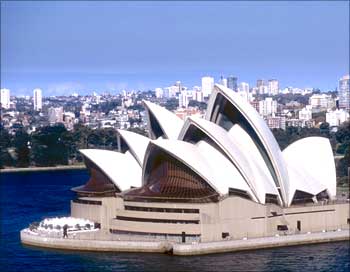
Rank 2: Australia
Over the last two decades, Australia's economy has experienced positive reforms that have boosted its economy, and raised its standard of living. Australia is today riding the commodity boom and should continue to grow for at least the next five years.
Australia is a western-style market economy. The services sector is the largest, accounting for 72 per cent of GDP in 2007. Australia is the world's second best place to live in.
It is a major exporter of natural gas, coal, iron, bauxite, copper, tin, gold, silver, uranium, tungsten, mineral sands, lead, zinc, opals, diamonds, grain, wool, meat and food products.
The main export partners are Japan, China, South Korea, US and India, and the main import partners are the US, China, Japan, Singapore, and Germany. further. . .
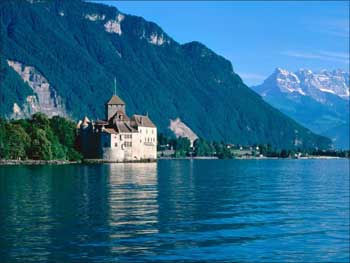
Rank 3: Switzerland
Switzerland's policy of long-term monetary security and bank secrecy has made it a safe haven for investors, creating an economy that is increasingly dependent on a steady tide of foreign investment.
It is the world's 3rd best place to live in.
Because of the country's small size and high labour specialisation, industry and trade are key to Switzerland's economic livelihood.
Switzerland has achieved one of the highest per capita incomes in the world with low unemployment rates and a low budget deficit.
Its economy is based on a highly qualified labour force performing highly skilled work. The main areas include microtechnology, hitech, biotechnology and pharmaceuticals. The service sector now employs the greatest number of people. further. . .

Rank 4: Germany
The German economy - the fifth largest economy in the world in PPP terms and Europe's largest - began to contract in the second quarter of 2008 as the strong euro, high oil prices, tighter credit markets, and slowing growth abroad took their toll on Germany's export-dependent economy.
Germany is the 4th best place on Earth to live in.
The modernisation and integration of the eastern German economy - where unemployment still exceeds 30 per cent in some municipalities - continues to be a costly long-term process, with annual transfers from west to east amounting to roughly $80 billion.
While corporate restructuring and growing capital markets have set strong foundations to help Germany meet the longer-term challenges of European economic integration and globalisation, Germany's export-oriented economy has proved a disadvantage in the context of weak global demand. further. . .

Rank 5: New Zealand
Over the past 20 years the government has transformed New Zealand from an agrarian economy dependent on concessionary British market access to a more industrialized, free market economy that can compete globally.
Per capita income has risen for nine consecutive years and reached $27,900 in 2008 in purchasing power parity terms.
New Zealand is the world's 5th best place to live in.
Debt-driven consumer spending drove robust growth in the first half of the decade, helping fuel a large balance of payments deficit that posed a challenge for economic managers.
The economy fell into recession in 2008. In line with global peers, the central bank has cut interest rates aggressively; the new government is responding with plans to raise productivity growth and develop infrastructure. further. . .

Rank 6: Luxembourg
The economy of Luxembourg is largely dependent on the banking, steel, and industrial sectors. Luxembourgers enjoy the second highest per capita gross domestic product in the world (by 2007 estimates), behind Qatar. Luxembourg is the world's 6th best place to live in.
Luxembourg offers a favourable climate to foreign investment. Successive governments have effectively attracted new investment in medium, light, and high-tech industry.
US firms are among the most prominent foreign investors, producing tires (Goodyear), chemicals (DuPont), glass (Guardian Industries), and a wide range of industrial equipment.
The current value of US direct investment is almost $1.5 billion, the highest level (of US direct investment) on a per capita basis outside of North America. further. . .
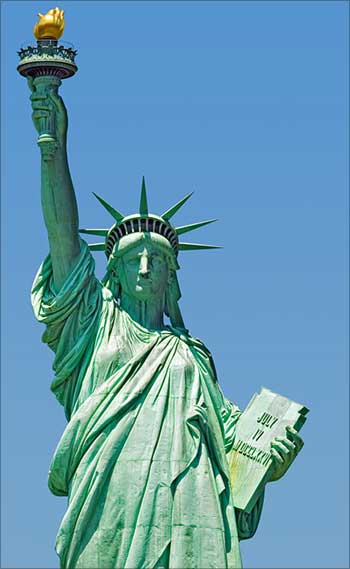
Rank 7: United States of America
The US has the largest and most technologically powerful economy in the world, with a per capita GDP of $46,900.
Soaring oil prices between 2005 and the first half of 2008 threatened inflation and unemployment, as higher gasoline prices ate into consumers' budgets. Imported oil accounts for about two-thirds of US consumption.
The USA is the world's 7th best place to live in.
Long-term problems include inadequate investment in economic infrastructure, rapidly rising medical and pension costs of an aging population, sizable trade and budget deficits, and stagnation of family income in the lower economic groups.
The merchandise trade deficit reached a record $819 billion in 2007 and $821 billion in 2008.
The global economic downturn, the sub-prime mortgage crisis, investment bank failures, falling home prices, and tight credit pushed the United States into a recession by mid-2008.
To help stabilise financial markets, the US Congress established a $700 billion Troubled Asset Relief Program (TARP) in October 2008.
The government used some of these funds to purchase equity in US banks and other industrial corporations.
In January 2009 the US Congress passed and President Barack Obama signed a bill providing an additional $787 billion fiscal stimulus - two-thirds on additional spending and one-third on tax cuts - to create jobs and to help the economy recover. further. . .
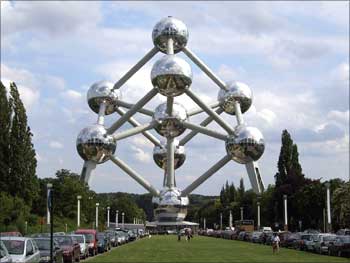
Rank 8: Belgium
The first country to undergo an industrial revolution on the continent of Europe in the early 1800s, Belgium developed an excellent transportation infrastructure of ports, canals, railways, and highways to integrate its industry with that of its neighbors.
Belgium imports raw materials and semi-finished goods that are further processed and re-exported. Except for its coal, which is no longer economical to exploit, Belgium has virtually no natural resources.
Belgium's public debt is more than 80 per cent of GDP. The government succeeded in balancing its budget during the 2000-2008 period, and income distribution is relatively equal.
Belgium began circulating the euro currency in January 2002. Economic growth and foreign direct investment dropped in 2008. It is the world's 8th best place to live in. further. . .
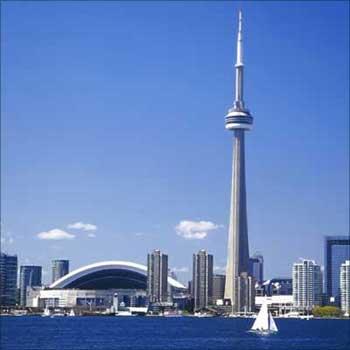
Rank 9: Canada
As an affluent, high-tech industrial society in the trillion-dollar class, Canada resembles the US in its market-oriented economic system, pattern of production, and affluent living standards. It is also the 9th best place to live in.
Given its great natural resources, skilled labour force, and modern capital plant, Canada has enjoyed solid economic growth, and prudent fiscal management has produced consecutive balanced budgets from 1997 to 2007.
In 2008, growth slowed sharply as a result of the global economic downturn, US housing slump, plunging auto sector demand, and a drop in world commodity prices.
Public finances, too, are set to deteriorate for the first time in a decade. further. . .

Rank 10: Italy
Italy has a diversified industrial economy, which is divided into a developed industrial north dominated by private companies, and a less-developed, welfare-dependent, agricultural south, with high unemployment.
The Italian economy is driven in large part by the manufacture of high-quality consumer goods produced by small and medium-sized enterprises.
Italy also has a sizable underground economy, which by some estimates accounts for as much as 15 per cent of GDP. These activities are most common within the agriculture, construction, and service sectors.
Italy is the world's 10th best place to live in.